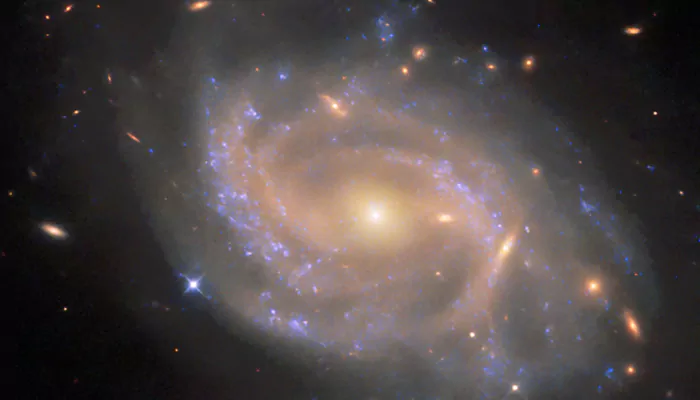
Here are today’s most important updates from the realm of Science and Space.
Astronomers have uncovered a remarkable cosmic oddity: a long-period radio transient (LPT) designated CHIME J1634+44, nicknamed the ‘unicorn’ for its singular characteristics. Most astonishingly, CHIME J1634+44 is spinning up, its rotation is accelerating, defying expectations since compact objects typically slow down as they radiate energy. Its radio bursts follow complex timing patterns: a fundamental period around 841 seconds (~14 minutes), a secondary period at 70 minutes, and hints of a 14-minute rhythm, implying periodicity at multiple scales. The discovery of CHIME J1634+44 expands the known population of LPTs and challenges existing models of neutron stars and white dwarfs, suggesting there may be many more such objects awaiting discovery.
🚀 AeroVironment (AV) unveiled "Skyfall," a concept for next-gen Mars Helicopters developed with NASA's JPL. This mission proposes deploying six scout helicopters by 2028 to explore potential human landing sites and search for resources on Mars. - AV pic.twitter.com/iMbdXvKFZi
— Faytuks Network (@FaytuksNetwork) July 24, 2025
(Credit: X/@FaytuksNetwork)
NASA is now preparing an ambitious new chapter in Martian exploration with the development of Skyfall, a mission concept featuring six next-generation helicopters. Designed in collaboration with NASA’s Jet Propulsion Laboratory (JPL), Skyfall aims to expand the capabilities of aerial robotics on Mars, providing critical support for future missions and eventually paving the way for human explorers.Skyfall’s helicopter fleet will serve multiple strategic purposes. By scouting remote and rugged locations inaccessible to rovers, the helicopters will identify scientifically valuable sites and potential resources such as water ice. The helicopters will provide real-time, high-resolution data to mission controllers, significantly enhancing situational awareness and reducing the risk and uncertainty that currently limits surface exploration.

In the sprawling Hydra constellation, 137 million light-years away, lies NGC 3285B—a dazzling spiral galaxy recently spotlighted by NASA’s Hubble Space Telescope. This cosmic beauty orbits the edges of the massive Hydra I galaxy cluster, home to some of the universe’s largest elliptical galaxies. What drew astronomers’ eyes was a brilliant Type Ia supernova, a cataclysmic stellar explosion bright enough to briefly rival billions of Suns. Hydra has the largest area of the 88 constellations that cover the entire sky in a celestial patchwork. It's also the longest constellation, stretching 100 degrees across the sky.

New findings from studying over two decades of satellite observations reveal that the Earth’s continents have experienced unprecedented freshwater loss since 2002, driven by climate change, unsustainable groundwater use and extreme droughts. The study highlights the emergence of four continental-scale “mega-drying” regions, all located in the Northern Hemisphere, and warns of severe consequences for water security, agriculture, sea-level rise and global stability. The research team reports that drying areas on land are expanding at a rate roughly twice the size of California every year. And, the rate at which dry areas are getting drier now outpaces the rate at which wet areas are getting wetter, reversing long-standing hydrological patterns.